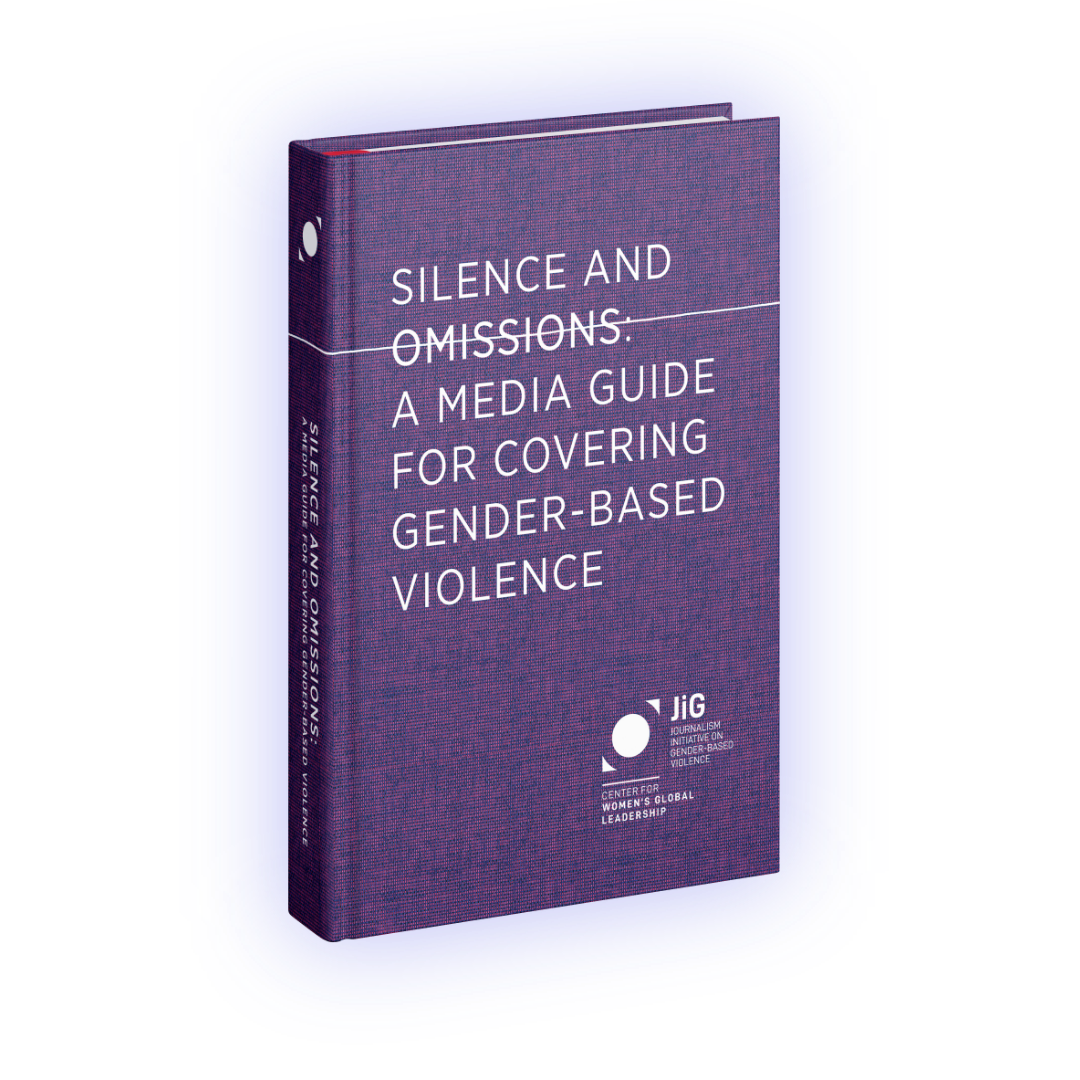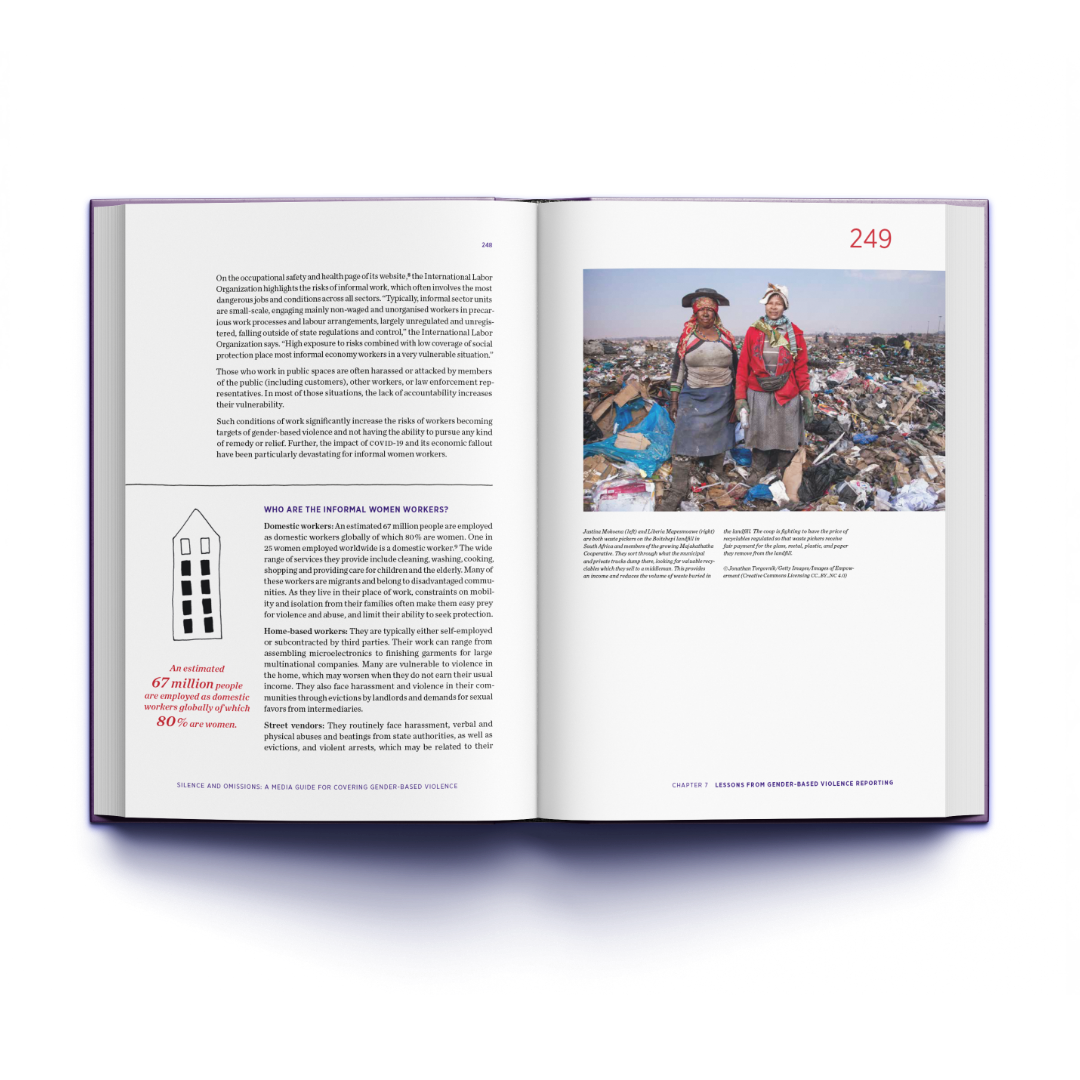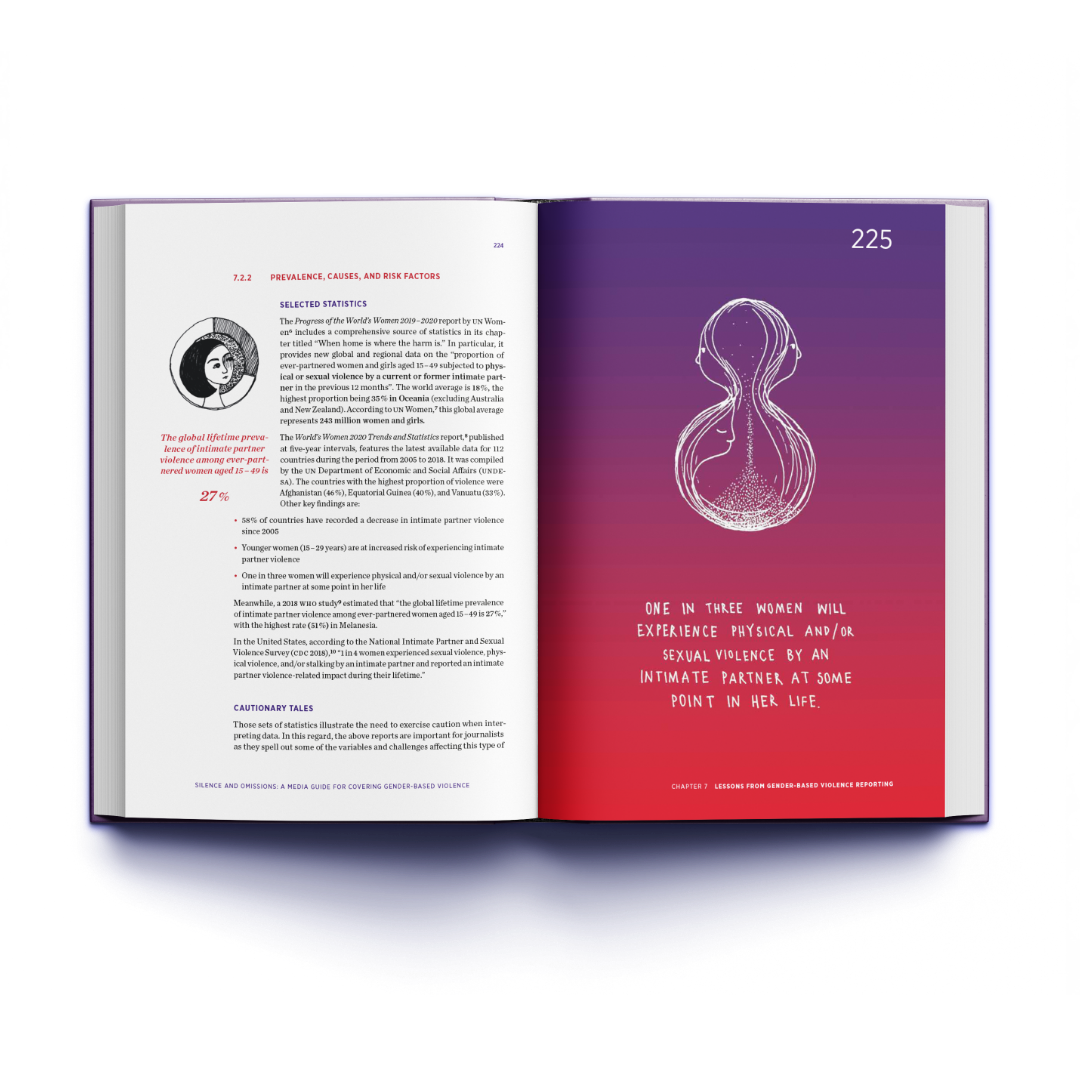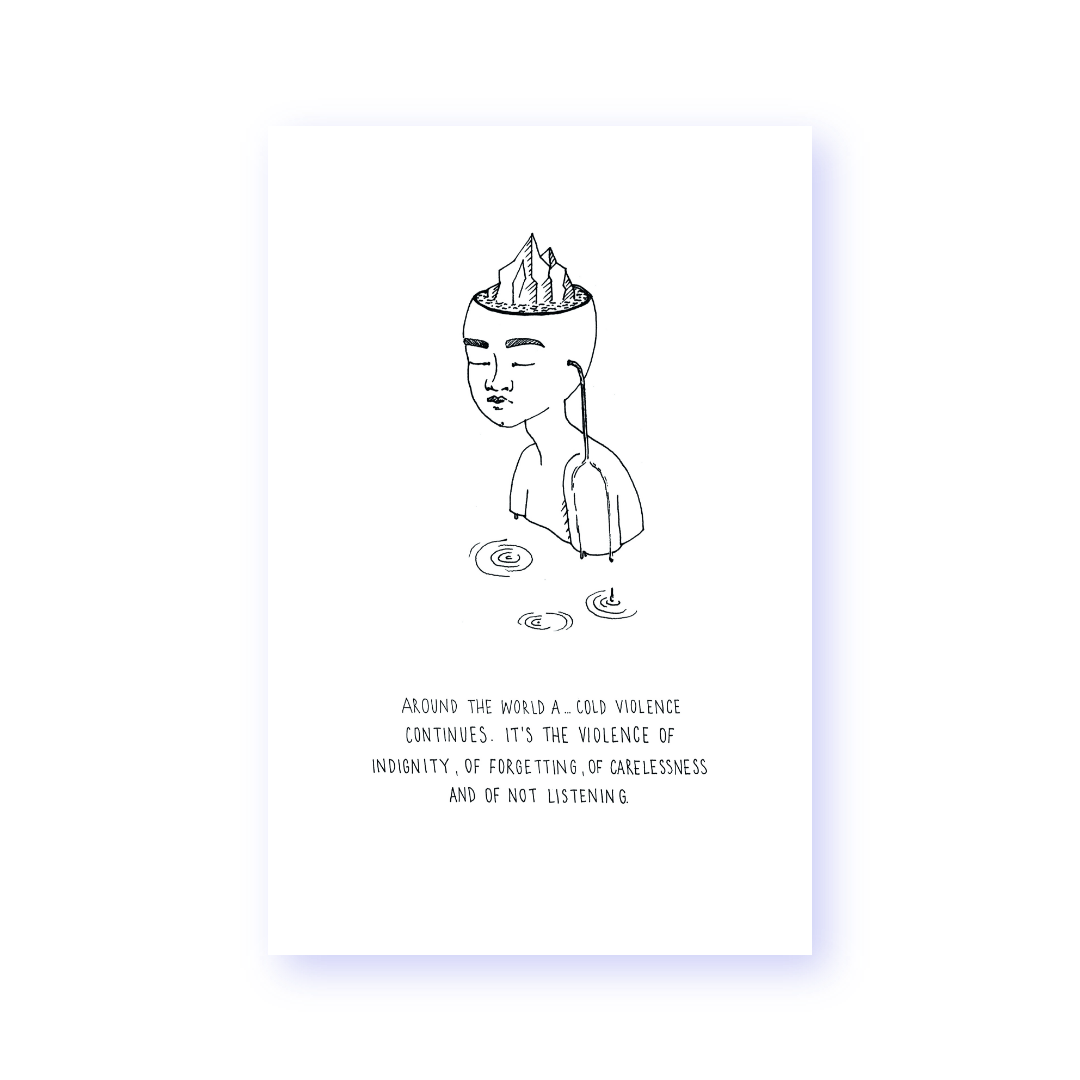Support reporting on gender-based violence
Cross media publication, describing guidelines for reporting on gender-based violence. The goal was to create a standard-setting handbook that is widely used by journalists and those who want to become one.
Made for Lucid.Studio.

We designed and implemented a publication that was meant to work in printed matter as well as online. The focus was to create a practical product, that is optimized for all use case scenarios. Whether one prefers to read a physical book, enjoys the advantage of clickable links and a search function reading on desktop devices, or checks information on the go via a mobile device. We have taken care of the whole process from understanding the needs of the end client, research, stylistic development, final design, implementation, and print production to shipping.
Dealing with the harsh topic of gender-based violence, we decided to go with illustrations rather than photography. A highly empathic way of communicating is extremely important to us. Working with delicate topics we want to make sure no one is offended, hurt, or gets even re-traumatized. Illustrations can be a workaround to enable more people to identify with the topic, to not show specific people, and to not glorify for example violence by abstracting it.
The close collaboration with the end client — the Center for Women’s Global Leadership — over time zones and continents during the recent pandemic, was mutually enriching despite the circumstances. It is the perfect example of what we love — supporting experts in changing the world for the better and getting a glimpse of their field of expertise through extensive research.







